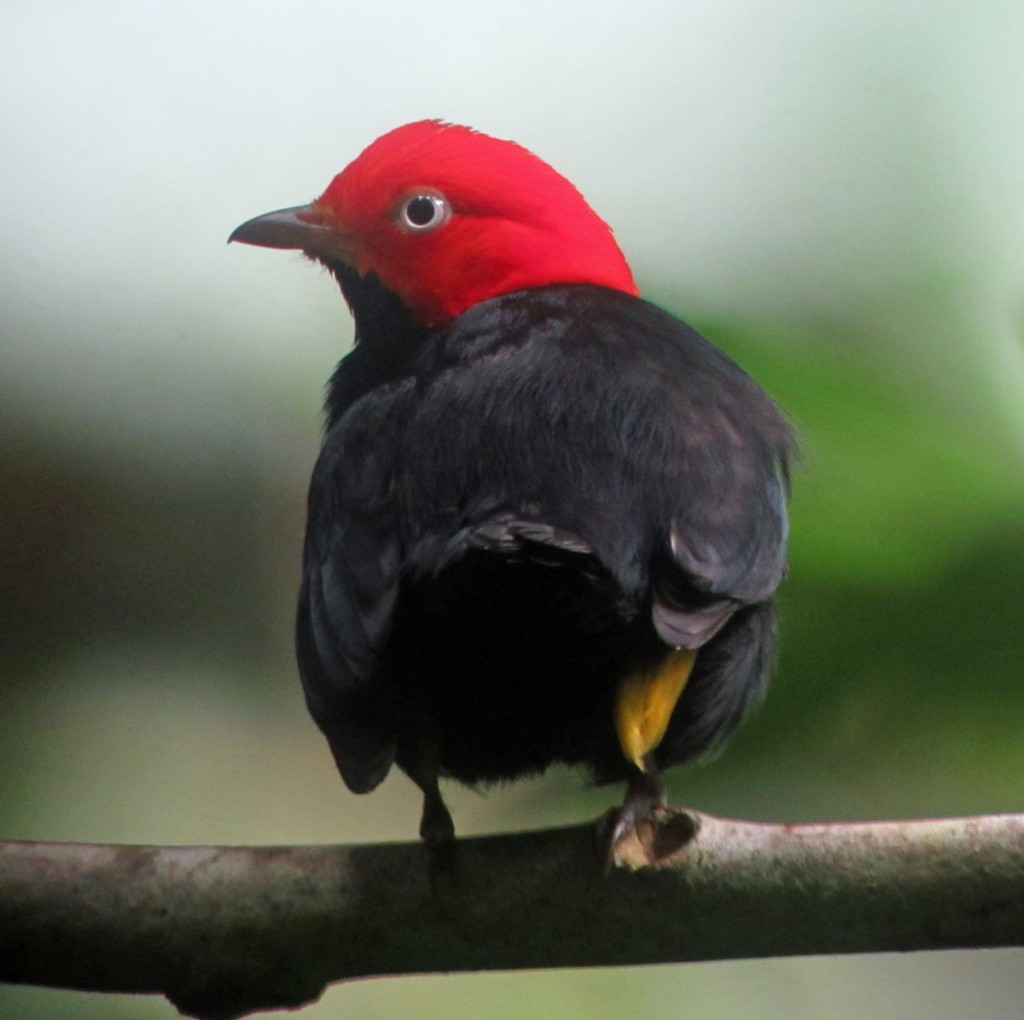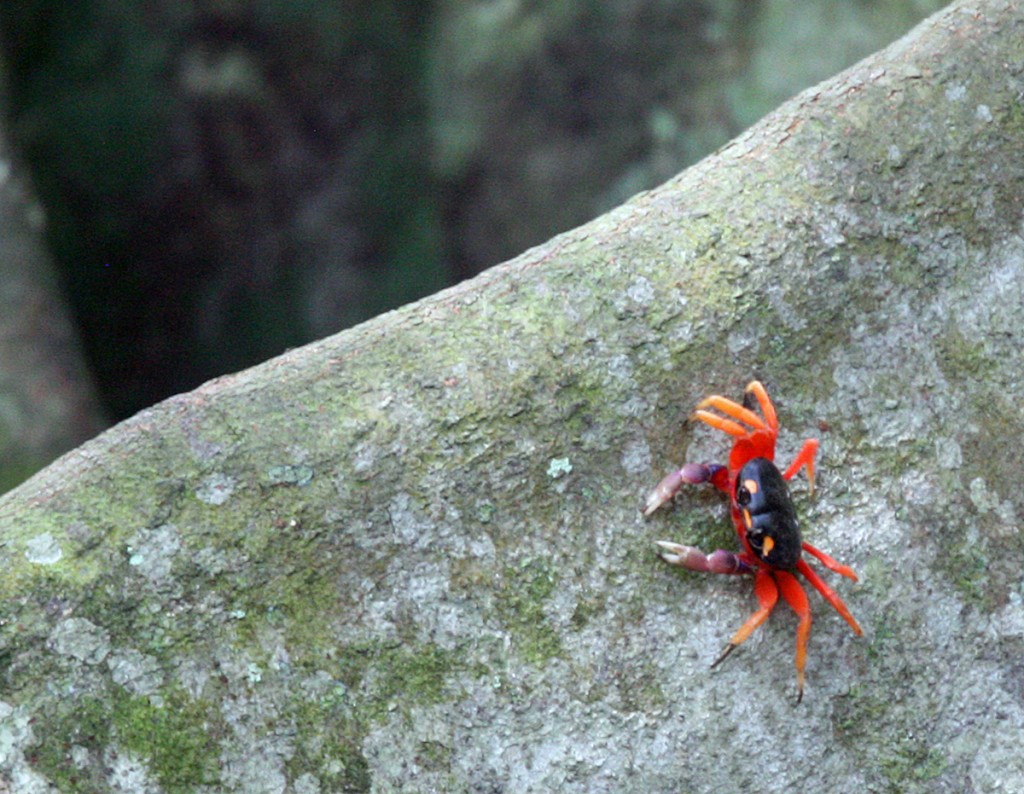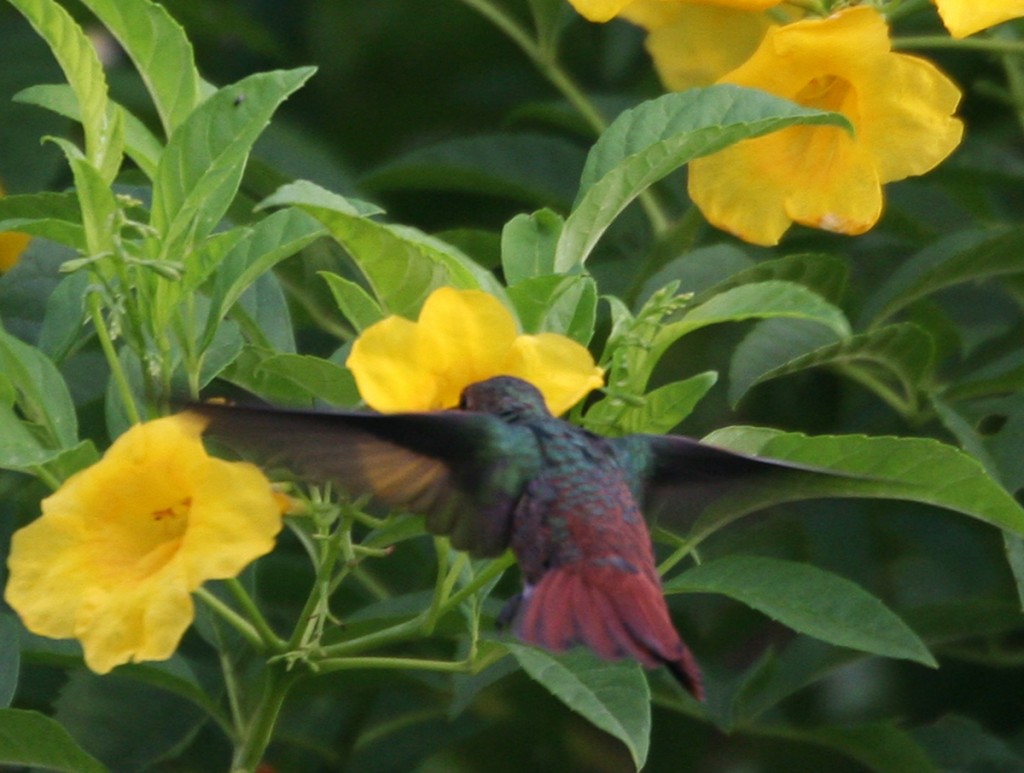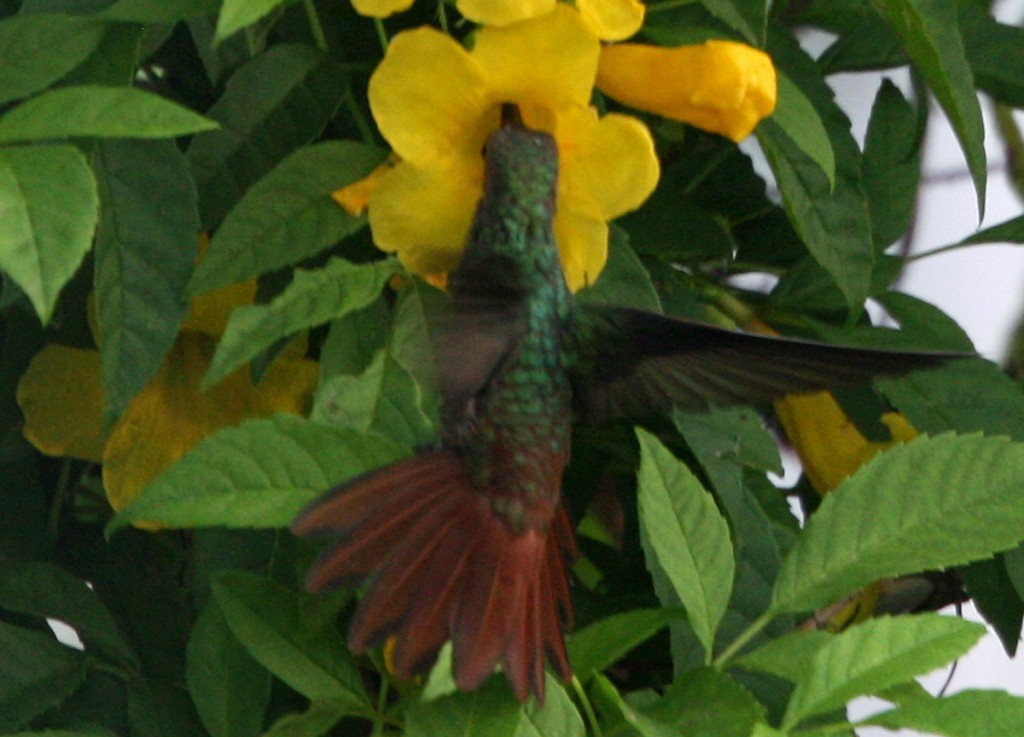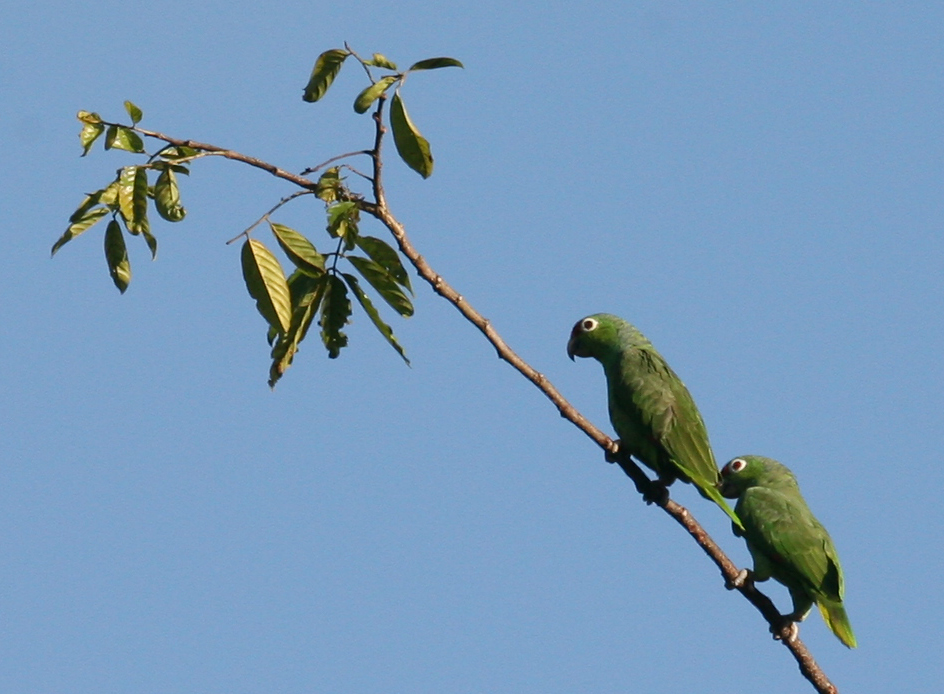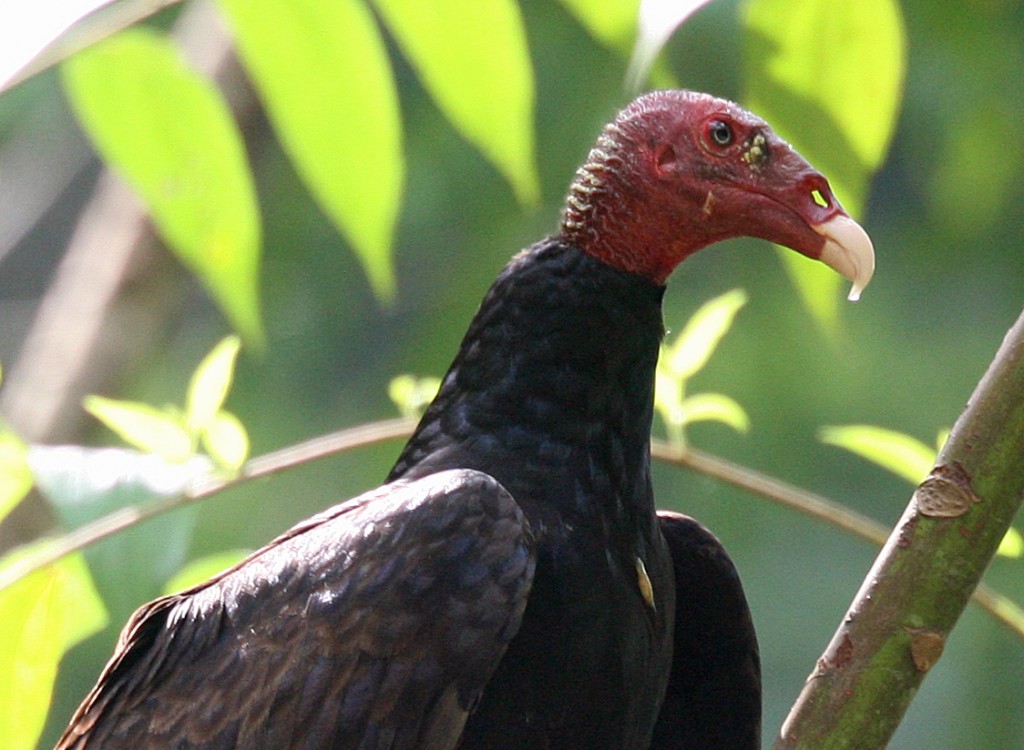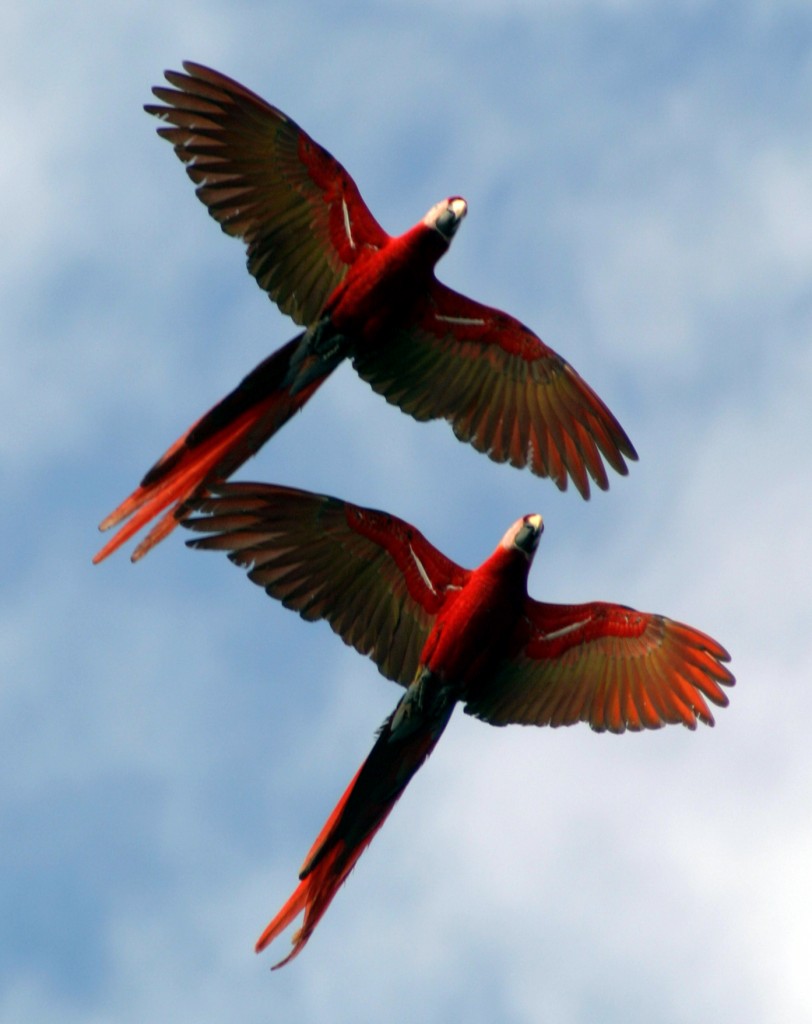Eight manakin species live in Costa Rica, but within somewhat separate and limited territories. Red-capped Manakins (Pipra mentalis) are perhaps the most common, located on much of the Caribbean slope as well as the southern Pacific region, where this one was photographed. A dimorphic species, the males have shiny black bodies, bright red hoods, and yellow thigh feathers, while the females are olive green. These little woodland birds with stout beaks are primarily frugivorous, meaning they mostly eat fruit.
All media is copyright costaricawildlife.net, 2013.

